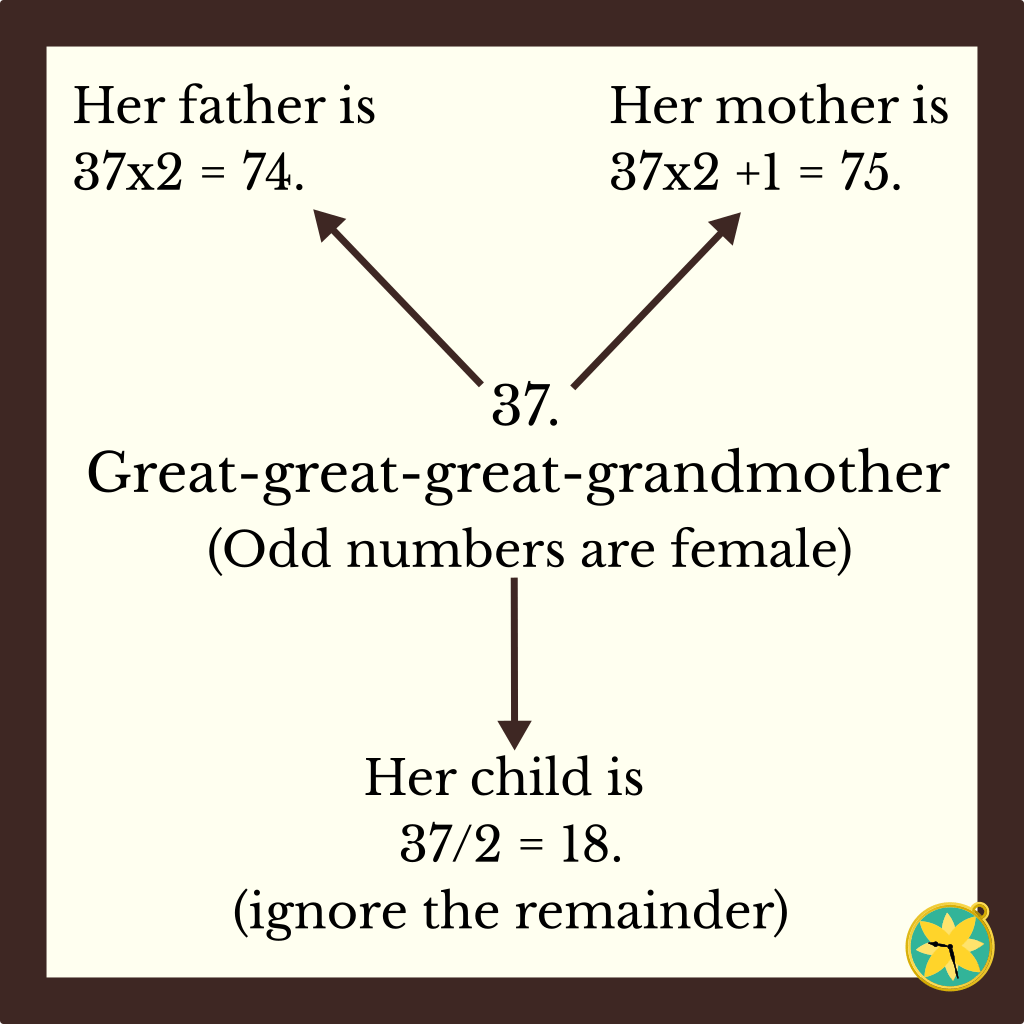A unique identification number for every individual in a family tree can make it easier to indicate who you mean. The ID numbers can be used to link records together and they can also show the relationships between family members.
Ahnentafel ID Numbers
The ahnentafel (ancestor table) system is widely used. It is designed for family trees starting with one individual and showing all of their ancestors.
The starting individual will be number 1. Their father will be 2 and their mother will be 3. The same system is used to number every other person in the tree. A father’s ID number is twice their child’s number. A mother’s ID number is twice their child’s plus one.

Male ancestors always have even ID numbers. Female ancestors always have odd numbers.
If you know one person’s ID number, it is easy to calculate the ID numbers of their relatives. Simply double the number to find their father’s ID or double it and add one to find their mother. Divide the number in half (ignoring any remainder) to find their child. You can also find who the individual had a child with by adding one (for men/even numbers) or deducting one (for women/odd numbers).

The ahnentafel system assigns numbers to positions in the tree, rather than to known individuals. Number 5 always refers to the paternal grandmother, even if her name isn’t known. This makes it easier to add new information to the tree later on, as there will always be an ID number ready to assign to the new person.
The main limitation of this system is that it doesn’t include siblings or any other relatives.
Another issue is that some people will end up with multiple ID numbers if they appear in multiple positions in the tree. If there are lots of cousin marriages in the tree, their shared ancestors could appear many times. Each position they appear in will have a different ID number.
Binary ID Numbers in Family Trees
Converting family tree ID numbers from the usual ahnentafel system to binary numbers has an interesting effect because the family tree has a similarly “binary” structure. Each individual has two parents, a mother and a father.
A binary version of the ahnentafel system can be created simply by converting the numbers.

The relationships between binary ID numbers can be understood in the same way as for the normal ahnentafel numbers. Fathers have ID numbers that are twice their child’s number. Mothers have IDs that are twice their child’s number plus one. The numbers just look different because they are written in binary.
However, the binary versions of ahnentafel IDs do make it easier to trace relationships back to the starting point of the tree. Because both binary numbers and parents come in twos, the binary ID number will contain the same number of digits as there are generations up from the starting individual. For each generation (except for the first, which always is always 1), a number 0 indicates a male relative while a number 1 indicates a female ancestor. It is therefore possible to look at a binary ID number and work out how that individual is linked to the first person in the tree.

It is also possible to use this quirk of binary ID numbers for family trees to write the IDs. Rather than working out the number and converting it to binary, you can simply add a 0 (for men) or a 1 (for women) to the end of their child’s ID number. You could even write out the whole binary ID number just by knowing how the individual is realted to the starting person. Your father’s mother’s mother would have the ID 1011. Her father would then be 10110 while her mother would be 10111.


